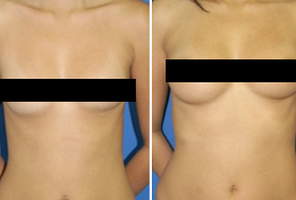Before female hair loss can be treated effectively with medication and or surgical hair transplantation, a physician must engage in appropriate dialogue with a woman to determine what causes may be accounting for her hair loss so as to safely rectify or improve her condition.
Many starting hair transplant surgeons rush to perform surgical hair restoration without proper front-end evaluation, which ultimately can lead to dissatisfaction and potentially even worsening of the hair loss. Unlike men who exhibit male pattern baldness, female hair loss must be investigated as to the cause to ensure that surgical transplantation will be both safe and effective. View common Female Hair Loss Disorders.
The two major concerns with woman's hair loss involves dermatological and more commonly hormonal problems that could be causing the loss of hair. Dermatological conditions include simple scalp conditions like temporary telogen effluvium that can follow delivery of a baby after pregnancy or more serious conditions like discoid lupus, etc. Typically, without any obvious skin lesions, etc., the surgeon who is contemplating surgical transplantation for a woman should recommend hormone evaluation to rule out metabolic conditions.
The most typical hormonal causes for female hair loss include a low iron level (which can be worsened owing to menstruation and with ferritin being the most sensitive blood marker for a treatably low iron level), low estrogen levels due to ongoing aging, etc. (which can be even more prevalent after menopause), low thyroid conditions, high androgen levels (the most common androgen in women is dihydroepiandesterone sulfate, or DHEAS), among other types of hormonal imbalances. A basic yet thorough chemistry panel may be a necessary first start before surgery should be contemplated.
Another important early intervention is managing the hair loss with minoxidil (marketed as Rogaine in the U.S. or Regaine in some countries). Minoxidil is a topical medication that is over the counter in the United States and comes in both 2% and 5% strengths. The 2% version is intended for women. However, for women who do not experience secondary facial or body hair growth, the 5% concentration can at times create a faster response than the 2% concentration but after one year the effects are nearly equal for women being treated with 2% and 5% minoxidil. Also, the 5% foam (which only comes as a brand Rogaine and there is no 2% foam) has eliminated the propylene glycol ingredient making the product less irritable on the skin.
A major drawback with minoxidil is that at 3 to 6 weeks patients may experience temporary further shedding, which is normal and indicative that the hair is entering what is known as anagen, or the growth phase of hair. In 3 to 6 months, hair is typically stabilized or reversed, as the investigation for the cause of the problem is discovered. In any case, if a woman is contemplating surgical hair transplant, the use of minoxidil can be very helpful in minimizing postoperative hair shedding following hair transplantation, as women are more susceptible to temporary shedding after surgery. Accordingly, ongoing minoxidil is a good idea for women considering upcoming surgical hair restoration.
Female pattern baldness presents in three distinct patterns. The most common type of hair loss is known as a "Christmas tree" pattern first described by Dr. Elise Olsen, who believes that it is the predominant pattern of hair loss in women. When a woman parts her hair in the middle and looks downward, the shape of a Christmas tree with the apex toward the back of the head is revealed. A second type of hair loss that could be a variant of Olsen's category has been described by Ludwig, which is a diffuse thinning throughout the scalp and which has classified according to the extent of thinning into Grades 1 through 3. Finally, the third type of hair loss mimics male pattern baldness with the exception that sometimes the hairline is spared. The purported reason for this variant is that women's higher serum aromatase level can maintain the hairline in some cases despite diffuse hair loss behind the hairline.
Call 1-888-866-3388 or visit our website to learn more about female hair transplant procedures in Dallas, Texas, or visit our female hair transplant photos. The details of female hair replacement (both the limitations and the benefits in your particular situation) will be explained to you during your hair transplant consultation with Dr. Lam and his team.
When a woman is ready to undergo surgical hair restoration by an experienced surgeon, she should review cases of female hair restoration that the surgeon has done because skills and design work for women differ radically than for men.

